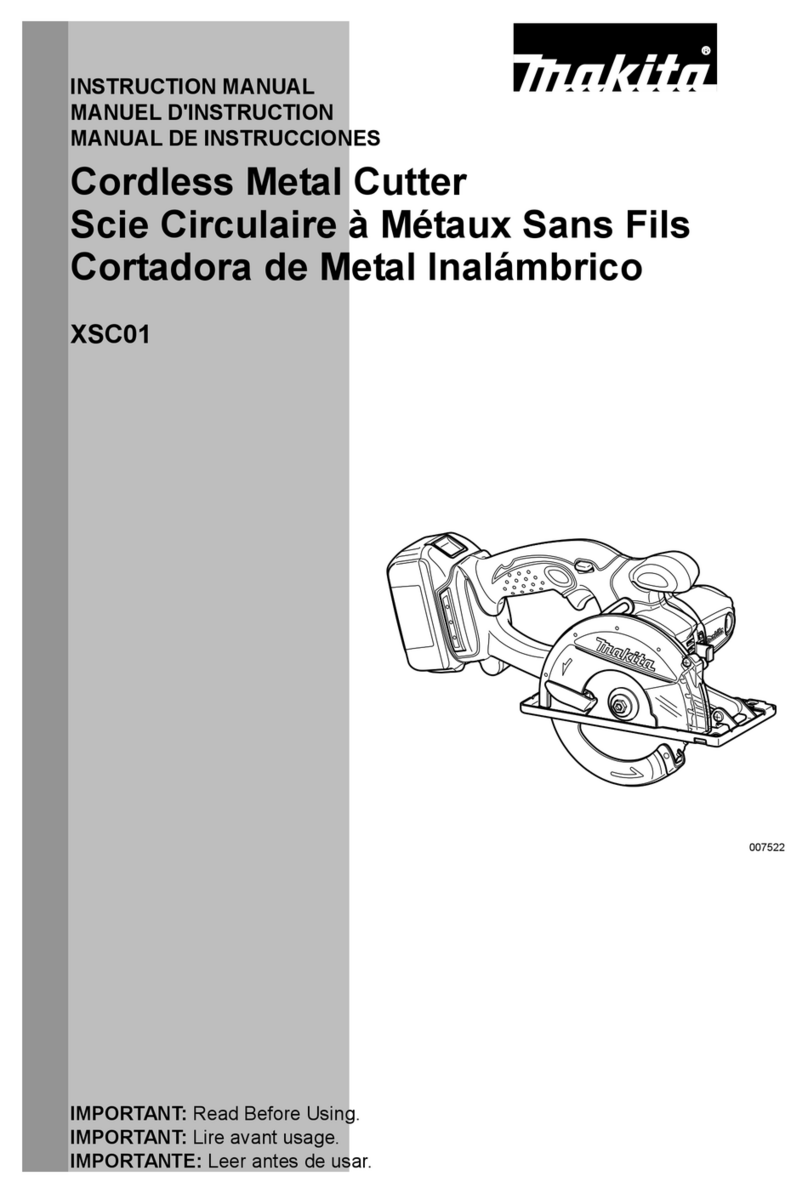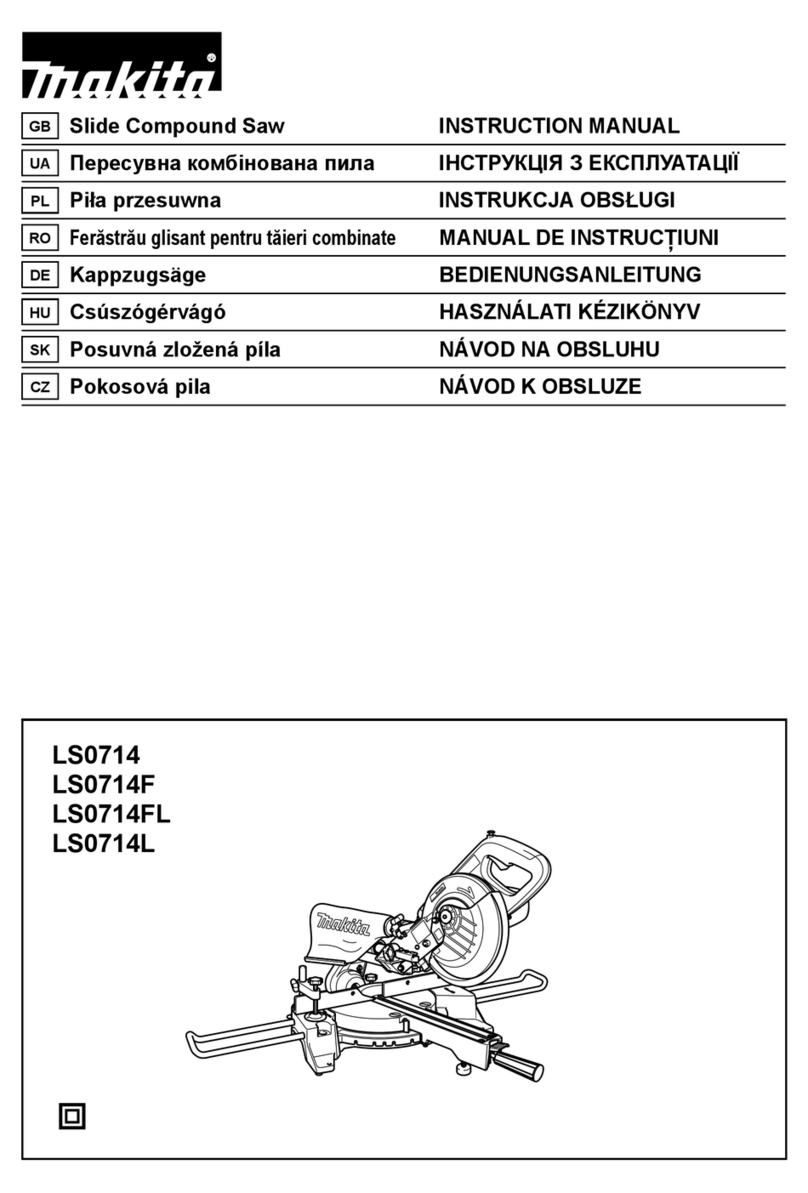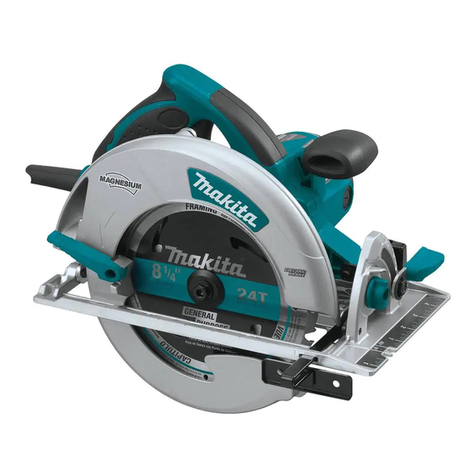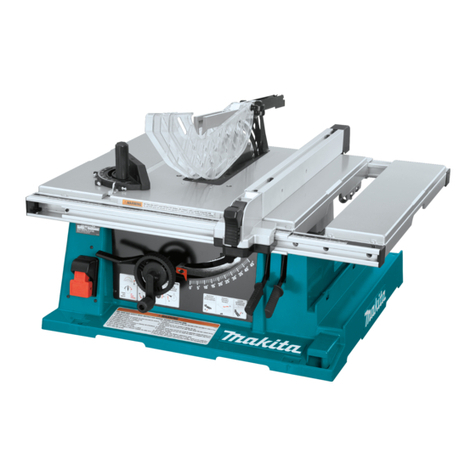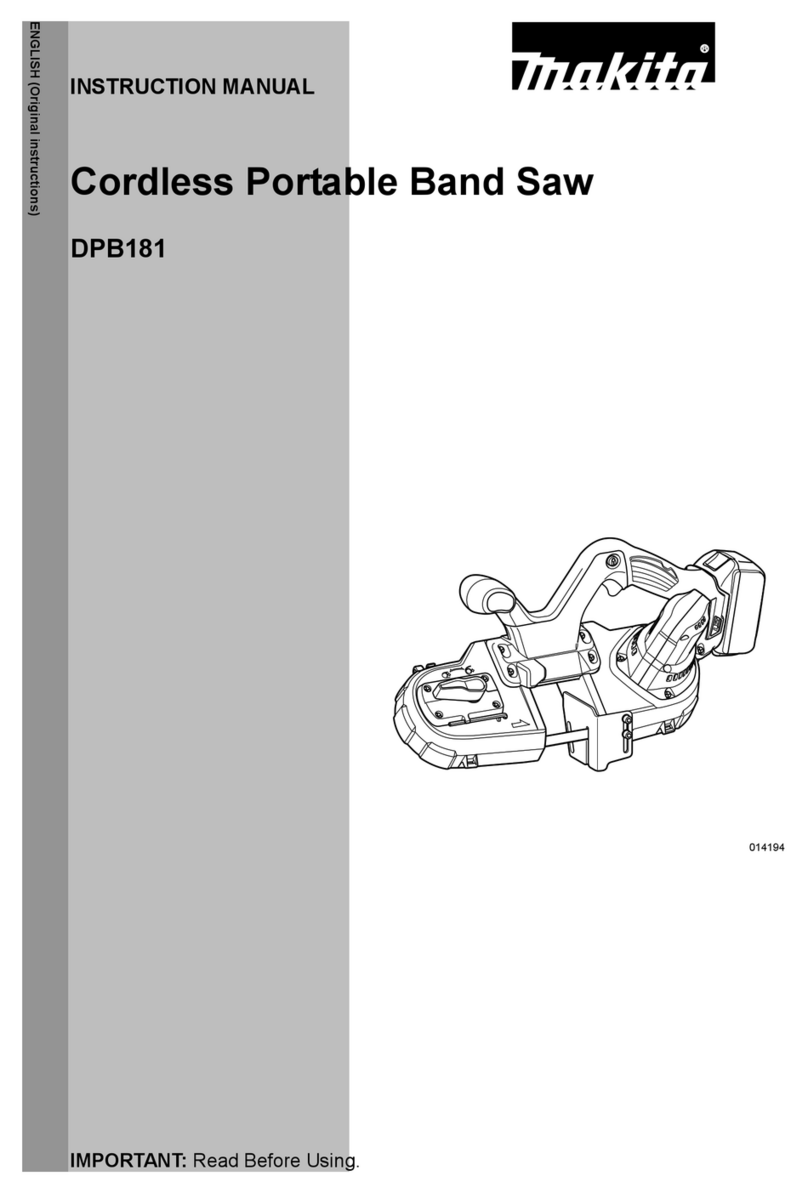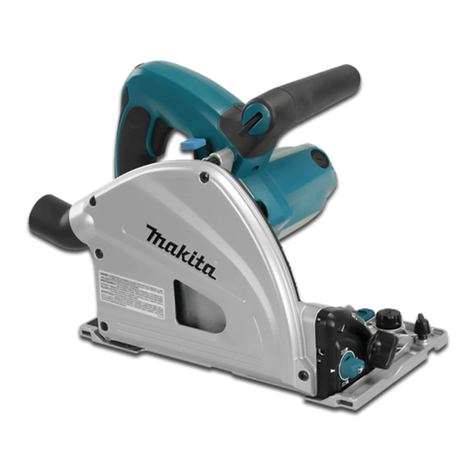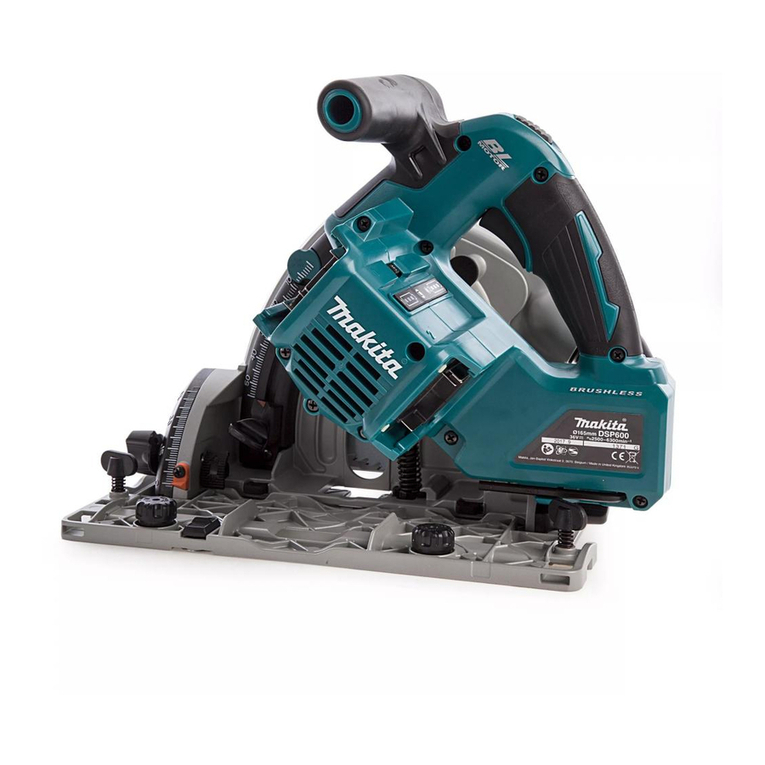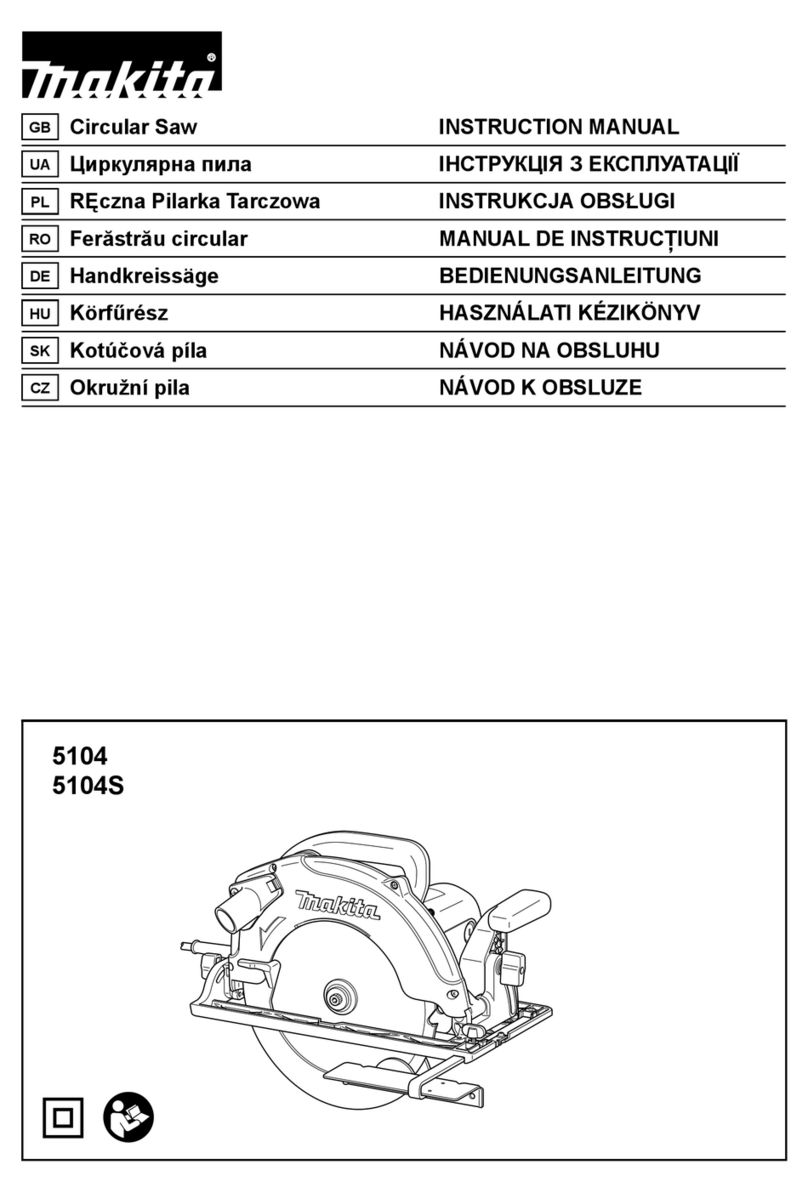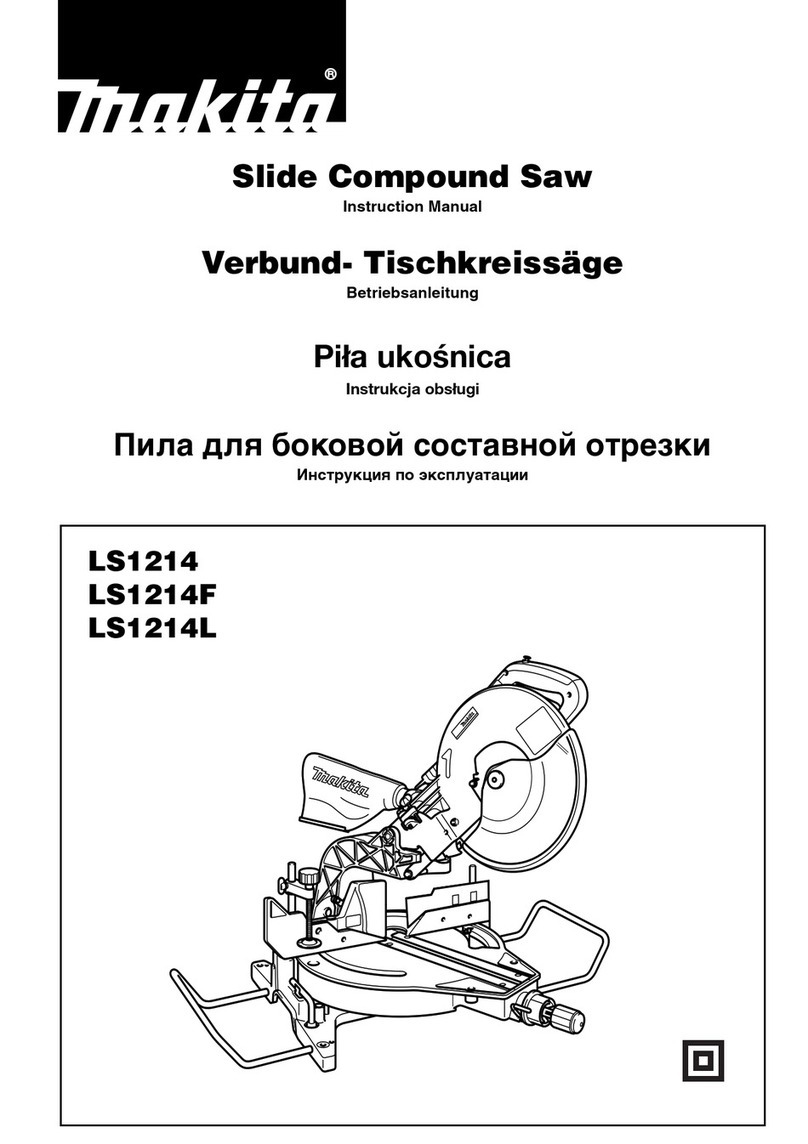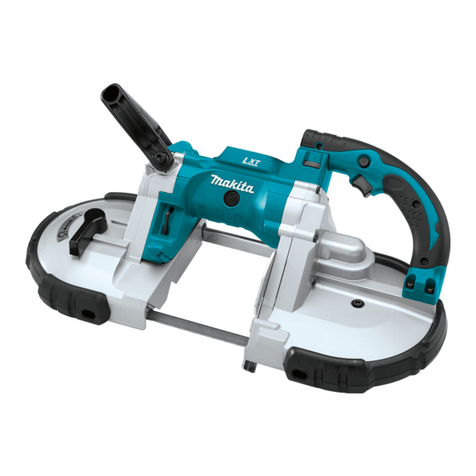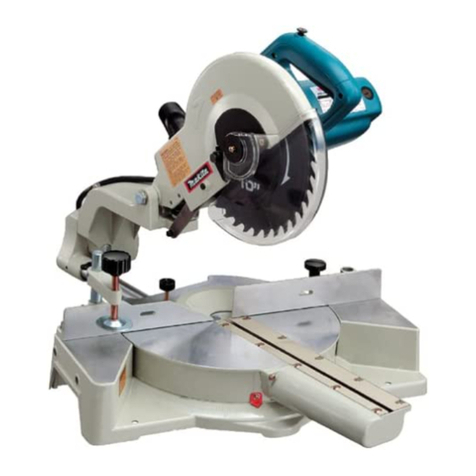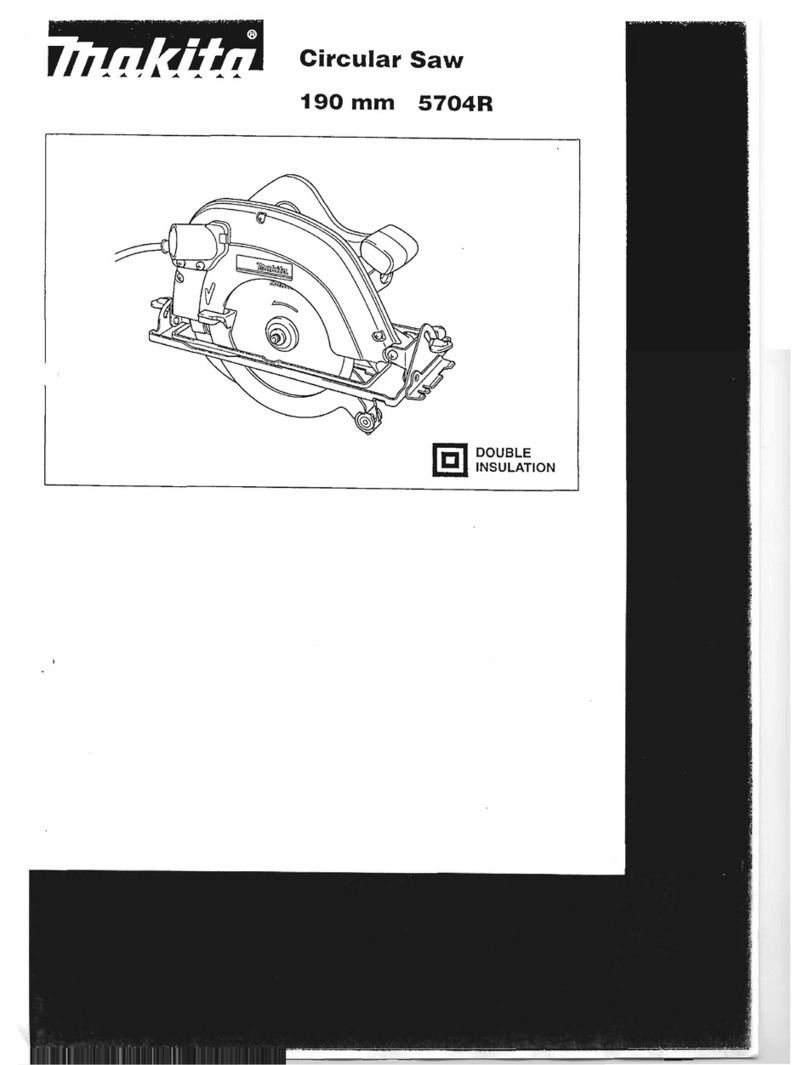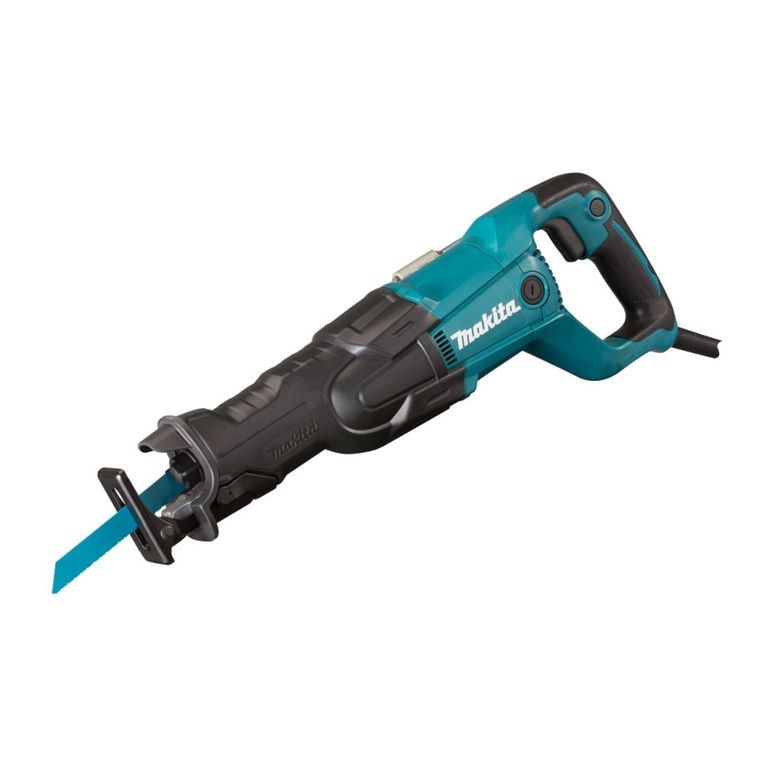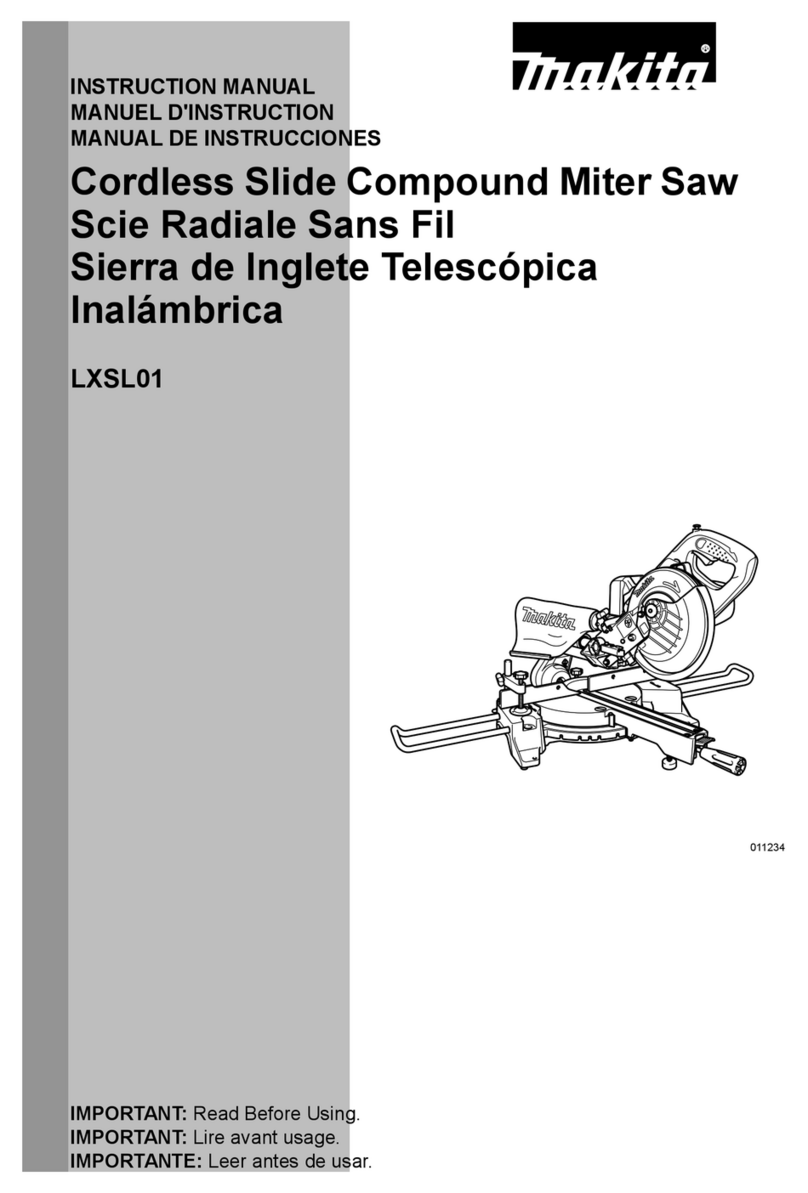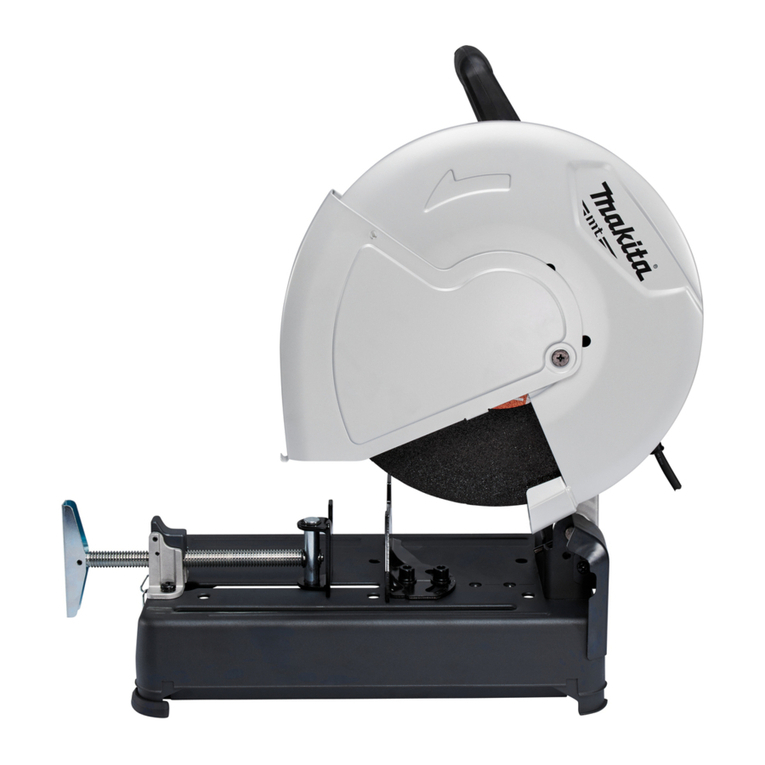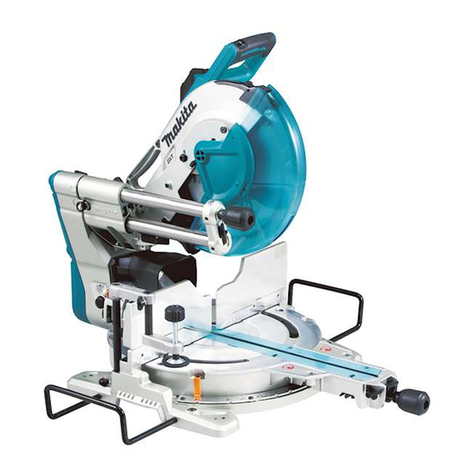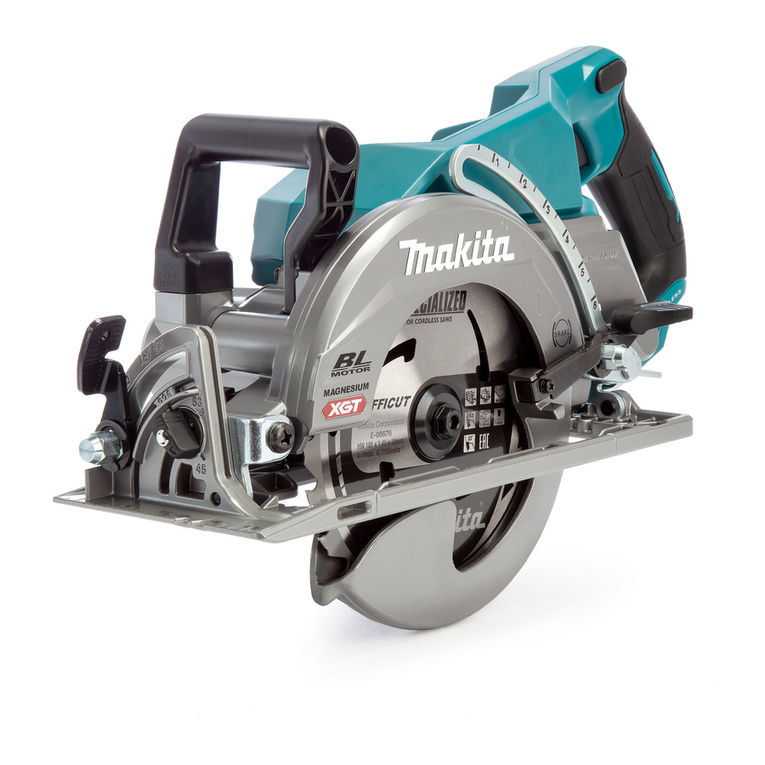
9ENGLISH
EC Declaration of Conformity
For European countries only
Makita declares that the following Machine(s):
Designation of Machine: Compound Miter Saw
Model No./ Type: M2300
Conforms to the following European Directives:
2006/42/EC
They are manufactured in accordance with the following
standard or standardized documents: EN61029
Thetechnicalleinaccordancewith2006/42/ECis
available from:
Makita, Jan-Baptist Vinkstraat 2, 3070, Belgium
1.1.2016
Yasushi Fukaya
Director
Makita, Jan-Baptist Vinkstraat 2, 3070, Belgium
General power tool safety warnings
WARNING: Read all safety warnings and
all instructions. Failure to follow the warnings and
instructionsmayresultinelectricshock,reand/or
seriousinjury.
Save all warnings and instruc-
tions for future reference.
The term "power tool" in the warnings refers to your
mains-operated (corded) power tool or battery-operated
(cordless) power tool.
MITER SAW SAFETY WARNINGS
1. Keep hands out of path of saw blade. Avoid
contact with any coasting blade. It can still
cause severe injury.
2. Check the saw blade carefully for cracks or
deformation before operation.
Replace damaged blades immediately.
3. Replace the kerf board when worn.
4. Use only saw blades specied by the manufac-
turer which conform to EN847-1.
5. Do not use saw blades manufactured from
high speed steel.
6. Wear eye protection.
7. Wear hearing protection to reduce the risk of
hearing loss.
8. Wear gloves for handling saw blade (saw
blades shall be carried in a holder wherever
practicable) and rough material.
9. Connect miter saws to a dust collecting device
when sawing.
10. Select saw blades in relation to the material to
be cut.
11. Do not use the saw to cut other than wood,
aluminum or similar materials.
12. Always secure all moving portions before car-
rying the tool. When lifting or carrying the tool,
do not use the guard as a carrying handle.
13. Do not operate saw without guards in place.
Check blade guard for proper closing before
each use. Do not operate saw if blade guard
does not move freely and close instantly.
Never clamp or tie the blade guard into the
open position.
14. Keep the oor area free of loose material e.g.
chips and cut-offs.
15. Use only saw blades that are marked with a
maximum speed equal to or higher than the no
load speed marked on the tool.
16. When the tool is tted with a laser or LED, do
not replace the laser or LED with a different
type. Ask an authorized service center for repair.
17. Never remove any cut-offs or other parts of the
workpiece from the cutting area whilst the tool
is running with an unguarded saw blade.
18. Do not perform any operation freehand. The
workpiecemustbesecuredrmlyagainstthe
turn base and guide fence with the vise during all
operations. Never use your hand to secure the
workpiece.
19. Ensure that the tool is stable before each cut.
20. Fix the tool to a work bench, if needed.
21. Support long workpieces with appropriate
additional supports.
22. Never cut so small workpiece which cannot be
securely held by the vise. Improperly held work-
piece may cause kickback and serious personal
injury.
23. Never reach around saw blade.
24. Turn off tool and wait for saw blade to stop
before moving workpiece or changing
settings.
25. Unplug tool before changing blade or
servicing.
26. Stopper pin which locks the cutter head down
is for carrying and storage purposes only and
not for any cutting operations.
27. Do not use the tool in the presence of amma-
ble liquids or gases. The electrical operation of
thetoolcouldcreateanexplosionandrewhen
exposedtoammableliquidsorgases.
28. Use only anges specied for this tool.
29. Be careful not to damage the arbor, anges
(especially the installing surface) or bolt.
Damage to these parts could result in blade
breakage.
30. Make sure that the turn base is properly
secured so it will not move during operation.
31. For your safety, remove the chips, small
pieces, etc. from the table top before
operation.
32. Avoid cutting nails. Inspect for and remove all
nails from the workpiece before operation.
33. Make sure the shaft lock is released before the
switch is turned on.
34. Be sure that the blade does not contact the
turn base in the lowest position.
35.
Hold the handle rmly. Be aware that the saw moves
up or down slightly during start-up and stopping.
36. Make sure the blade is not contacting the
workpiece before the switch is turned on.
